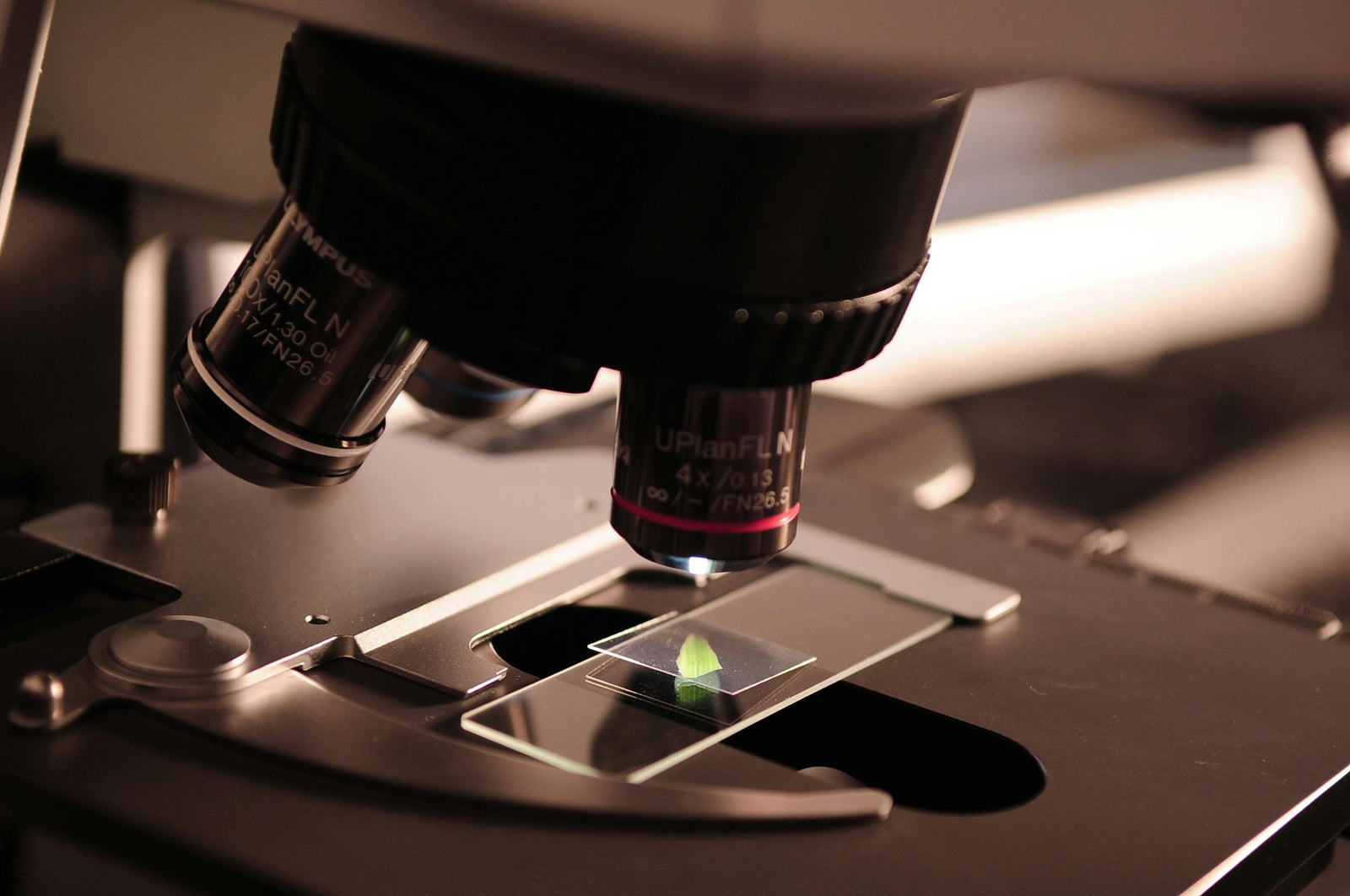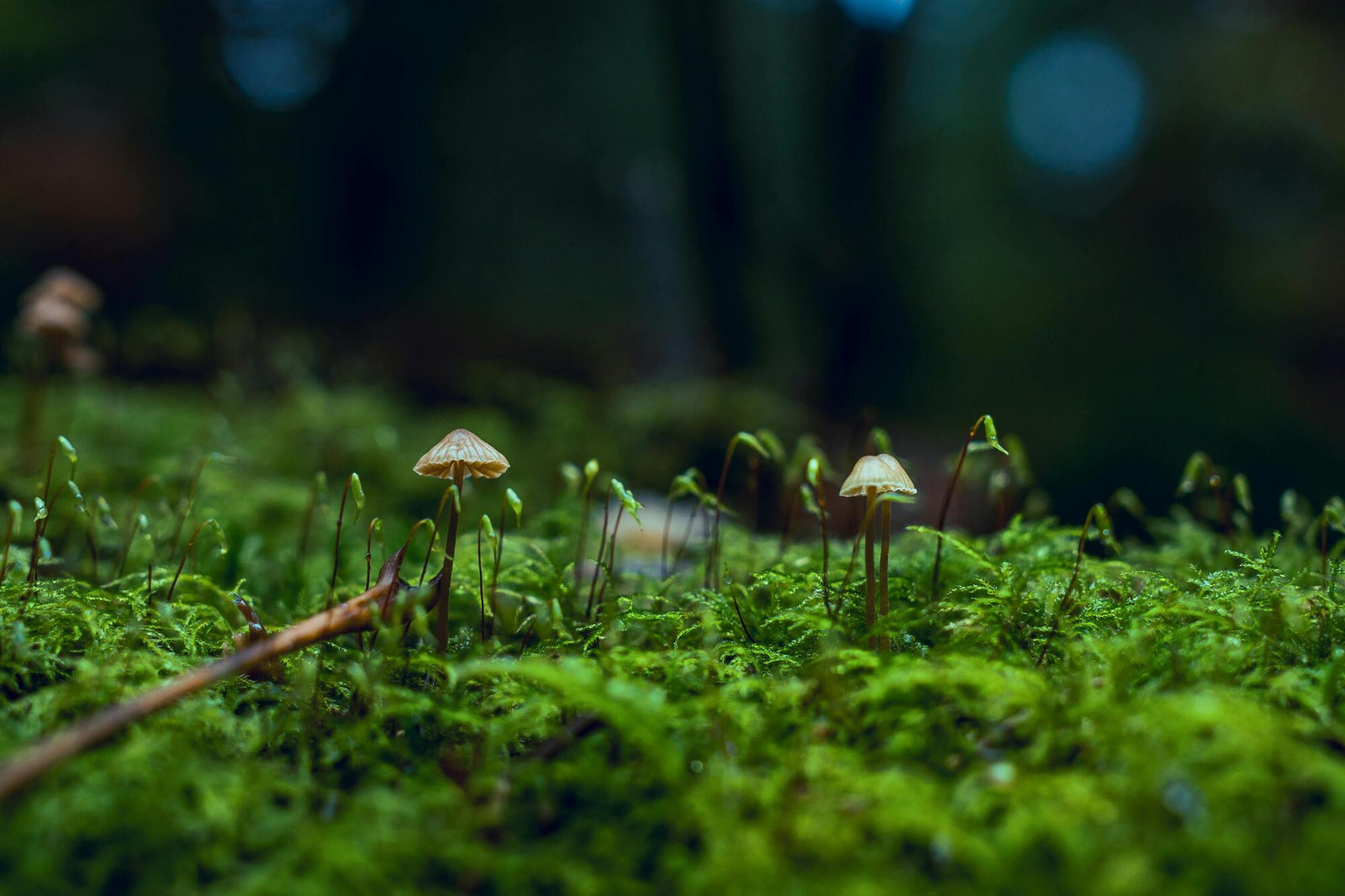Your Cart is Empty

January 13, 2025 6 min read
Take our quiz and find which supplements your body is craving.

Written by Chris Bellanger, BHSc in Nutritional Medicine
Nanotechnology is the science and engineering of manipulating matter at an extremely small scale—specifically, the nanoscale, or anywhere between one and 100 nanometers. To put this into perspective, a nanometer is one billionth of a meter. This field involves working with individual atoms and molecules to create new materials, devices, and systems with unique properties and functions.
With numerous applications across various industries, including medicine, electronics, energy, and materials science, nanotechnology is causing a revolution in many fields. For example, manipulating materials at the atomic scale enables the development of more effective drug delivery systems, the creation of stronger and lighter materials, and the improved efficiency of solar cells. In this article, I will dive into the promising future of symbiosis between green nanotechnology and traditional remedies in skincare.
Unfortunately, traditional nanotechnology produces and disposes of particles that have the potential to contaminate water, air, and soil, potentially harming not only the environment but also the human food chain. This is particularly concerning since these particles are so small that they can penetrate cellular membranes, with poorly understood long-term implications.
In response, “green nanotechnology” is on the rise. It prioritizes a more ecological and sustainable approach, hoping to curtail any potential future harm while still delivering the desired solutions.
This includes the use of biocompatible and biodegradable sustainable materials from natural compounds, eco-friendly production employing waste-minimizing production, and improved safety protocols. This ensures more thorough research of potential environmental and health impacts, thus developing safer products.

Excitingly, researchers are inspired by nature in developing methods for synthesizing nanomaterials, such as certain bacteria that can produce beneficial nanospheres without harmful processes. Similarly, natural substances like phytochemicals from plants facilitate the synthesis of nanoscale gold, offering a safer alternative to traditional methods that involve toxic solvents.
So now, along with the exciting potential of green nanotechnologies to help remediate contaminated land and wastewater, we are also discovering the great potential for using naturally sourced materials in many areas within medicine, including dermatology and the newly founded area of cosmeceuticals, the synthesis of cosmetics and pharmaceuticals.
Phytotherapy uses plant-derived compounds, similar to many pharmaceutical drugs, which are still sourced from plant compounds or artificially synthesized for medicine. However, in lieu of synthesizing these compounds, many consumers prefer naturally derived sources, which are also more environmentally friendly.
Many of these compounds show great therapeutic promise in laboratory studies but often prove difficult to deliver to the area of the body where they are needed for therapeutic effect. This can be due to issues like large molecule size, and, therefore, low oral and dermal bioavailability.
These factors have remained problematic in allowing fully effective treatments. However, with the integration of these two fields, phytotherapy and green nanotechnology, active plant compounds can be encapsulated or added to nanoemulsions for topical delivery, and efficiently targeted to specific sites in the body with precision. This ensures active substances reach the target in adequate concentration, optimizing therapeutic effects while minimizing potential side effects.
It also has the potential to turn our skin creams into skin-delivered medicines.
Nanotechnology has changed this paradigm for oral medications and topical creams. Through the use of nanoscale particles, nanofibers, and other nanodevices, these plant compounds are delivered directly to specific cells, with faster absorption and longer activity, thus increasing the treatment's effectiveness and safety.
This is particularly advantageous in dermatological treatments such as for acne or psoriasis as well as for the fusion of cosmetics and pharmaceuticals known as “cosmeceuticals.” These are both increasingly popular for treating anti-aging issues like wrinkles, scarring, or stretch marks, and also for the potential of providing a therapeutic benefit such as wound healing and sun protection.

At the heart of many cosmeceuticals are phytocompounds, natural plant-derived molecules renowned for their antioxidant, antimicrobial, and anti-inflammatory properties. They have been used in traditional medicine for centuries.
Herbal cosmeceuticals have advanced significantly with nanotechnology, enabling the maintenance of skin at a cellular level and the provision of daily antioxidants and skin-rejuvenating agents. The result? Enhanced protection alongside additional health benefits.
Nanomedicine and green nano-phytomedical research are booming due to their enormous potential. Research literature extensively documents the integration of herbal extracts with nanotechnology, using techniques like liposomes, liquid crystals, ethosomes, nanoemulsions, polymeric nanoparticles, and more.
Polymeric nanoparticles improve the solubility, stability, and delivery of herbal extracts, such as curcumin and licorice, for treating psoriasis and other inflammatory skin conditions.
NLCs offer stability and controlled release advantages. By encapsulating phytocompounds within a solid lipid matrix, these carriers enhance the delivery of active ingredients, including skin penetration, over a prolonged period, reducing the frequency of application needed so antioxidants like quercetin are then capable of providing better treatment outcomes for conditions like psoriasis and acne.
A variation of liposomes containing high alcohol content, ethosomes exhibit even greater skin permeation capabilities and retention of active ingredients like curcumin for treating psoriasis, reducing drug leakage, and enhancing therapeutic benefits.
Liposomes, spherical vesicles with a bilayer structure, are widely used for their ability to encapsulate both hydrophilic (water-soluble) and lipophilic (lipid-soluble) substances. They protect PHYTOCs from degradation and enhance skin penetration. Liposomes target specific cells, like melanoma cells, demonstrating improved efficacy over traditional treatments by effectively delivering compounds like camptothecin.
Nanoemulsions have come to the forefront in enhancing the delivery of herbal compounds through the skin. Nanoemulsions with Phyllanthus extract showed remarkable anti-aging effects by neutralizing oxidative damage—a crucial factor in skin aging. Nanoemulsions using lecithin with spruce balm and birch bark extracts demonstrate significant potential in wound healing by enhancing fibroblast and keratinocyte viability, essential players in skin repair.
Niosomes are promising vesicular carriers that enhance the stability and skin permeability of herbal extracts. For instance, encapsulated ginger concentrate within niosomes achieved notable anti-inflammatory effects comparable to commercial hydrocortisone creams.
Nanofibers, composed of durable polymer chains, are innovative delivery systems to enhance wound healing. Emodin-loaded nanofibers, for instance, accelerate wound recovery by promoting re-epithelialization at injury sites while reducing associated side effects.
Hydrogels and nanogels offer unique mechanisms for delivering herbal compounds by maintaining prolonged contact with the skin, and improving drug penetration and retention, as demonstrated in formulations involving quercetin-loaded hydrogels, significantly improving wound healing applications.
This groundbreaking approach—combining highly therapeutic plant compounds with green nanotechnology's ability to manipulate compounds into nanocarriers to deliver phytocompounds effectively across the skin barrier—is particularly useful in treating many skin conditions, which due to the skin's complex shield-like structure, previously made topical penetration difficult.

However, by enhancing the deep skin penetrating effects of numerous, evidence-based plant compounds, using nanosized carriers to improve stability and bioavailability, and enabling their delivery precisely where needed with long-lasting benefits that reduce the need for frequent applications, conditions like dermatitis, psoriasis, and acne, hold the potential for greatly improved and targeted outcomes.
The potential of herbal nanomedicines in dermatology is vast, offering innovative solutions for various skin conditions.
Conditions like atopic dermatitis and psoriasis are characterized by inflammation and require treatments that can modulate immune responses while soothing irritated skin. Herbal extracts such as licorice and turmeric have demonstrated anti-inflammatory properties, while nano-encapsulation enhances their absorption and effectiveness.
Herbs like birch bark, known for its betulin content, and onion extracts are celebrated for their wound-healing properties. Nanocarriers help these compounds stay active throughout the healing process, accelerating recovery and reducing the risk of infection.
Acne is influenced by factors like inflammation, excess sebum production, and bacterial colonization. Green tea extracts, rich in epigallocatechin-3-gallate, have anti-inflammatory and antimicrobial properties. Nanotechnology ensures these compounds penetrate the skin effectively, offering a potent natural solution for acne management.
The union of herbal medicine with nanotechnology represents revolutionary advancement in treating skin conditions. By addressing the limitations of traditional treatments with targeted, effective delivery systems, herbal nanomedicines become a beacon for the future of dermatological health.
As these innovations continue to develop, they promise safer, more effective treatments that merge the best of nature with cutting-edge science, continuing to evolve the landscape of skincare and therapeutics.
Discover skin-loving, natural supplements that grant high bioavailability and support your skincare regime from the inside.
Agrawal, R., Jurel, P., Deshmukh, R., Harwansh, R. K., Garg, A., Kumar, A., Singh, S., Guru, A., Kumar, A., & Kumarasamy, V. (2024c). Emerging Trends in the Treatment of Skin Disorders by Herbal Drugs: Traditional and Nanotechnological Approach. Pharmaceutics, 16(7), 869. https://doi.org/10.3390/pharmaceutics16070869
Santos, A. C., Rodrigues, D., Sequeira, J. A., Pereira, I., Simões, A., Costa, D., Peixoto, D., Costa, G., & Veiga, F. (2019). Nanotechnological breakthroughs in the development of topical phytocompounds-based formulations. International Journal of Pharmaceutics, 572, 118787. https://doi.org/10.1016/j.ijpharm.2019.118787
Khan, F., Shariq, M., Asif, M., Siddiqui, M. A., Malan, P., & Ahmad, F. (2022). Green Nanotechnology: Plant-Mediated Nanoparticle Synthesis and Application. Nanomaterials, 12(4), 673. https://doi.org/10.3390/nano12040673
Salem, S. S. (2023). A mini review on green nanotechnology and its development in biological effects.Archives of Microbiology, 205(4). https://doi.org/10.1007/s00203-023-03467-2
Garcella, P., Wijaya, T. H., & Kurniawan, D. W. (2023b). Narrative Review: Herbal Nanocosmetics for Anti Aging. JPSCR Journal of Pharmaceutical Science and Clinical Research, 8(1), 63. https://doi.org/10.20961/jpscr.v8i1.57675
Vaishampayan, P., & Rane, M. M. (2022c). Herbal nanocosmecuticals: A review on cosmeceutical innovation. Journal of Cosmetic Dermatology, 21(11), 5464–5483. https://doi.org/10.1111/jocd.15238

March 20, 2025 8 min read
Discover the benefits of creatine for women with Amandean’s Creatine HCI. Improve strength, energy, recovery, and cognitive function with this high-absorption formula. Its advanced HCl form ensures easy digestion and no bloating, providing all the benefits without the drawbacks. Elevate your fitness journey and overall wellness with a supplement designed for women’s unique needs.

March 03, 2025 7 min read
Discover how Bryan Johnson, a tech entrepreneur turned biohacker, uses cutting-edge science and personalized genetic testing to revolutionize health and longevity. Learn how biohacking, from diet to mental health practices, can help you live longer and healthier, with practical strategies to optimize your well-being. Find out more about genetic testing, and ways to implement results into your wellness routine.

February 19, 2025 6 min read
Explore the remarkable health benefits of medicinal mushrooms like Lion’s Mane, Turkey Tail, Chaga, and Reishi. These superplants support immune function, reduce inflammation, and boost brain health. Learn about Amandean's Brain Health supplement, combining Lion’s Mane, Magtein, and Alpha-GPC for optimal cognitive performance.